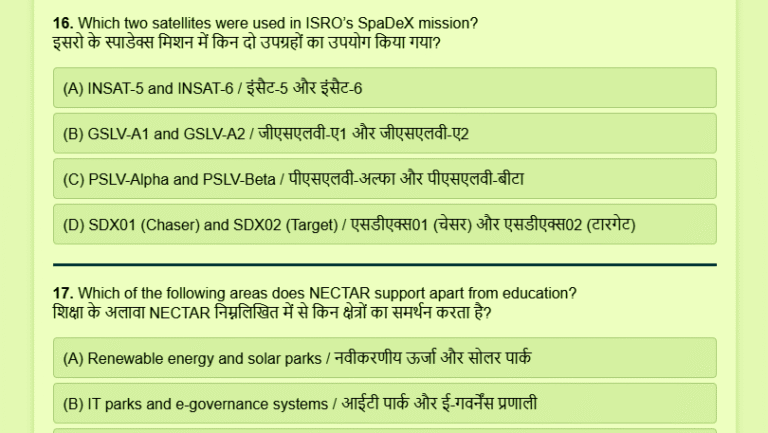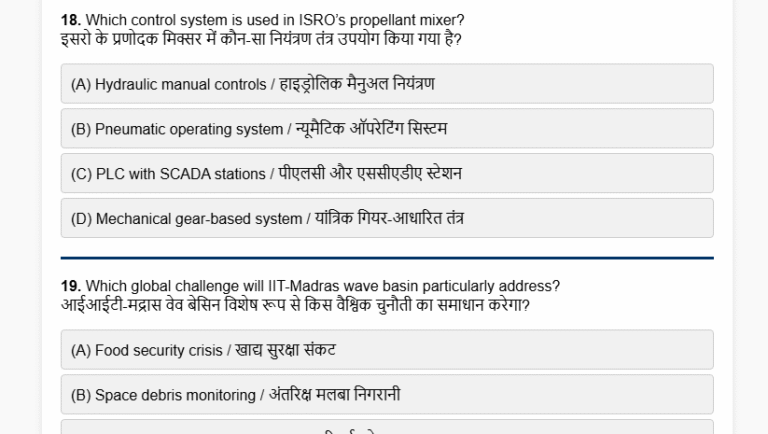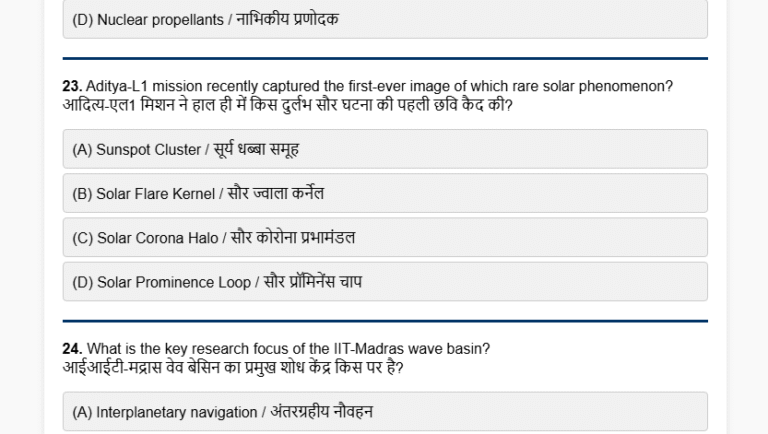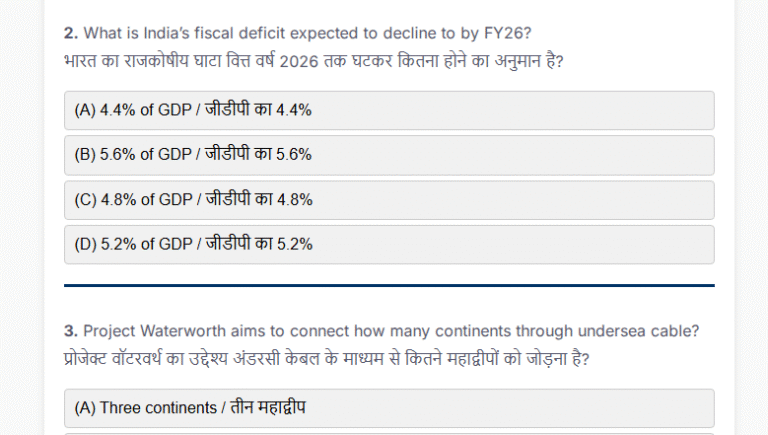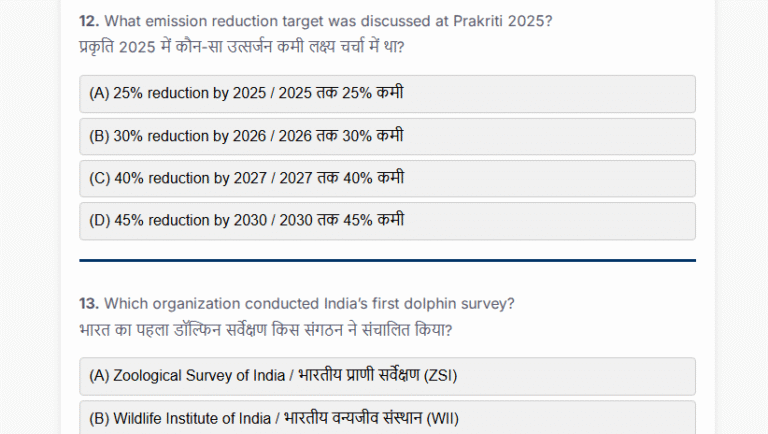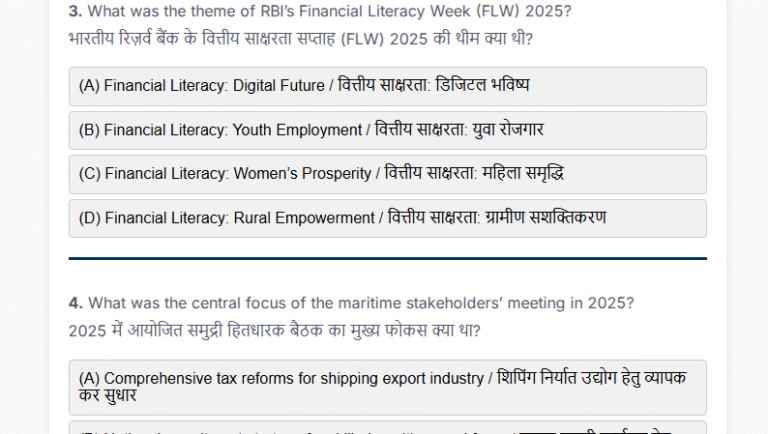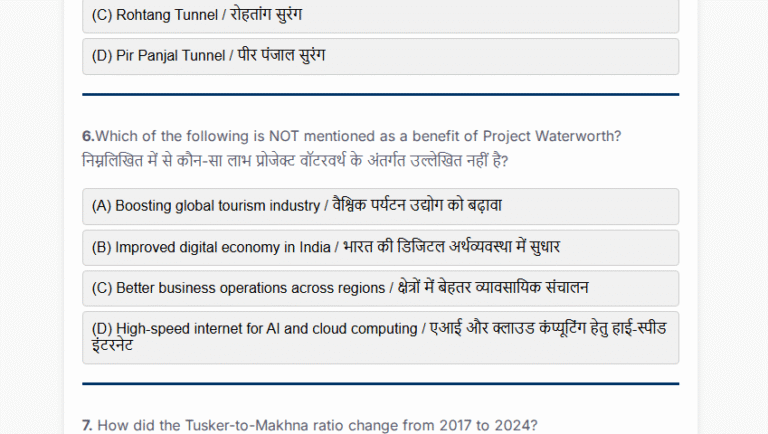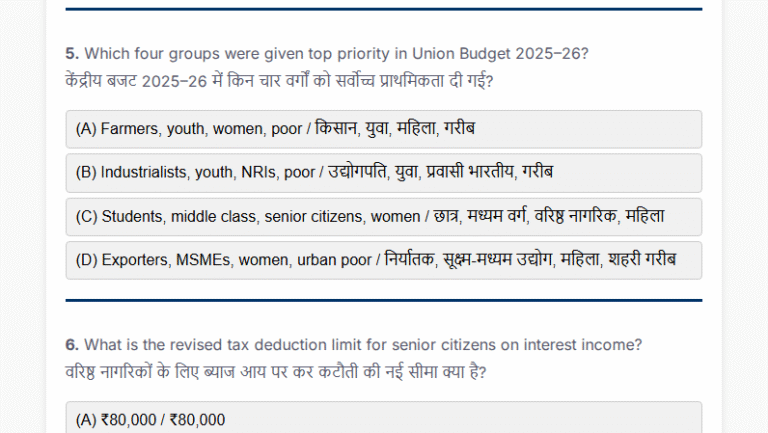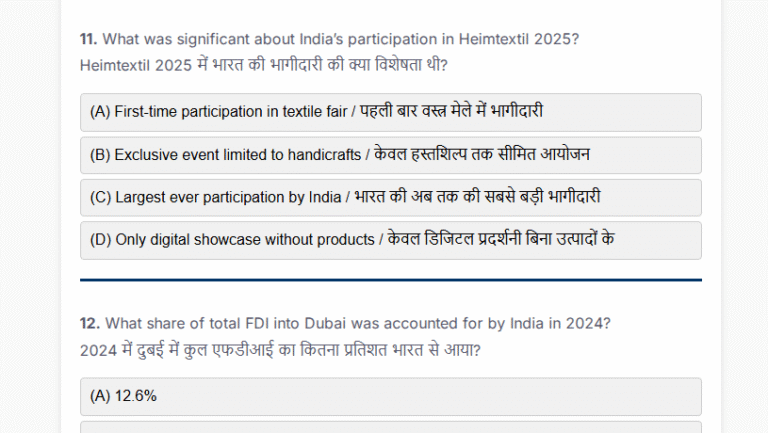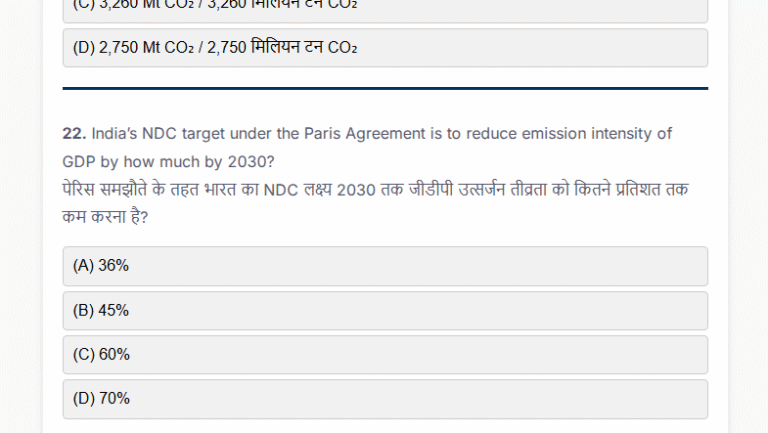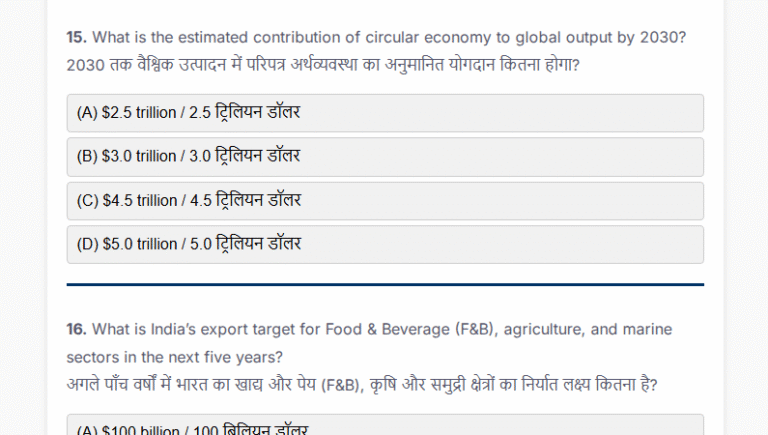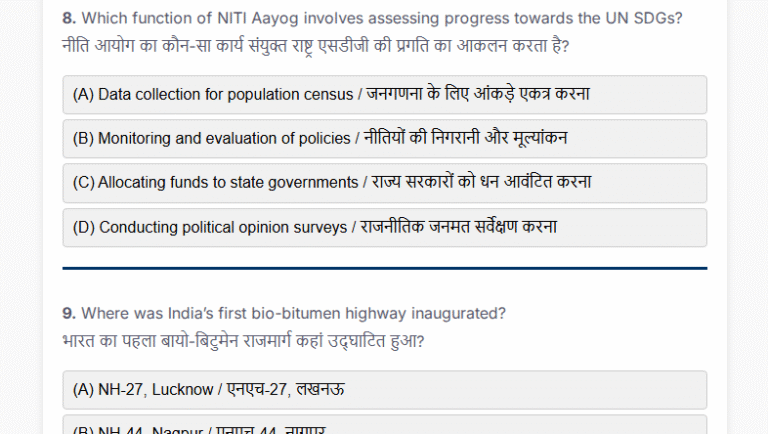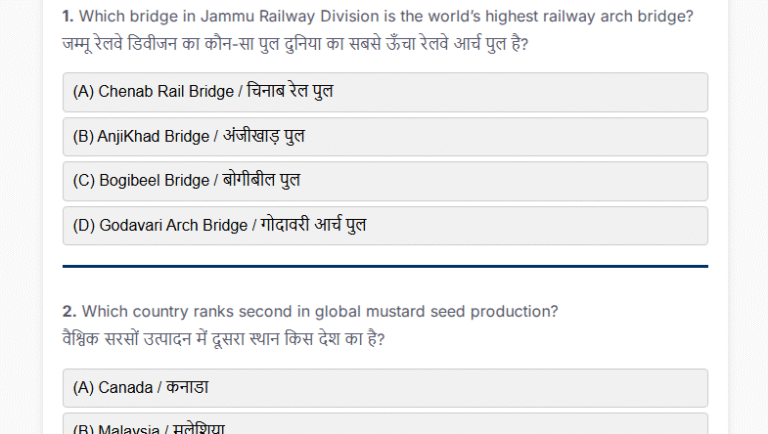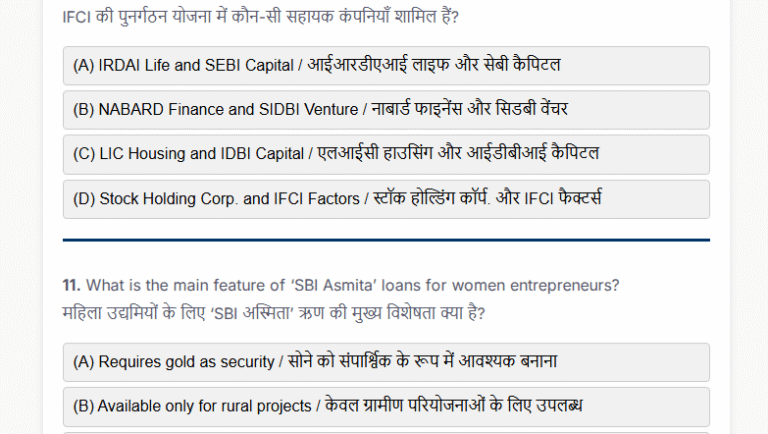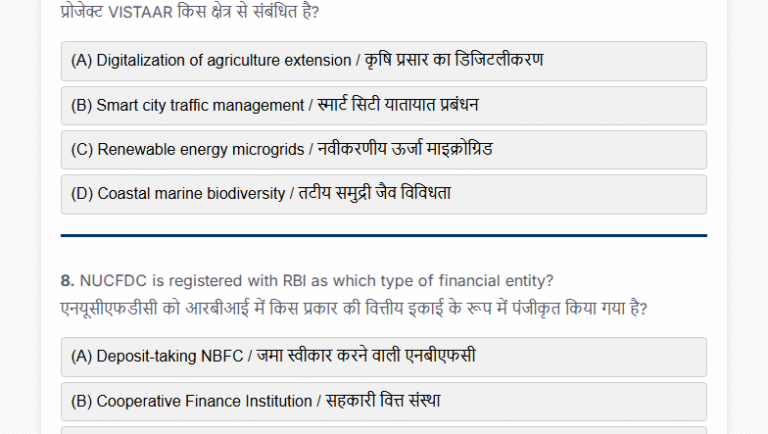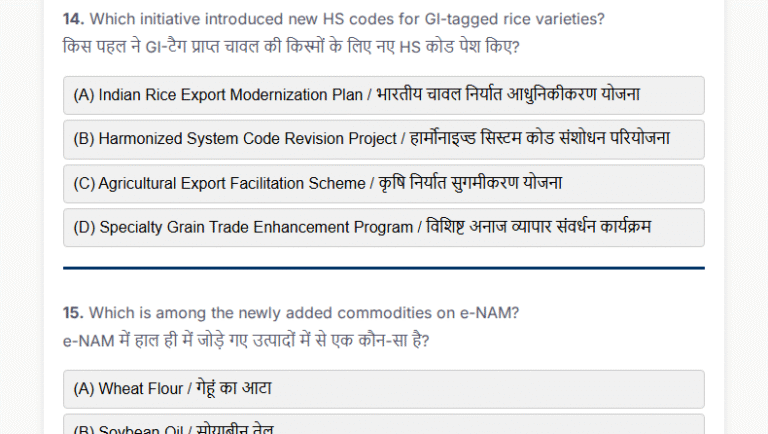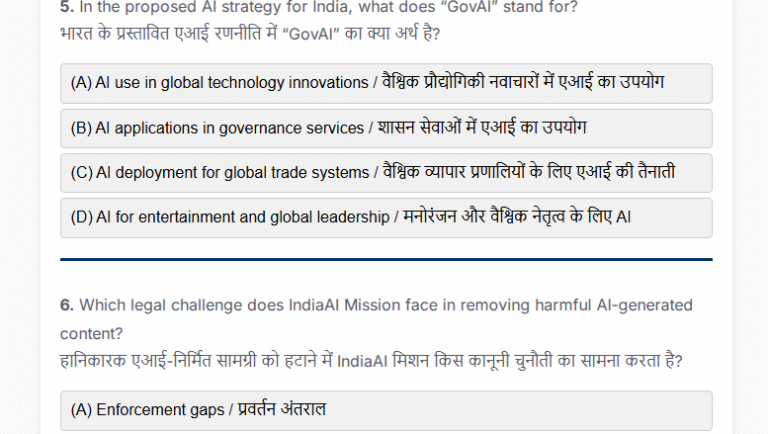Current Affairs Today MCQs (14 Nov 2024)
1. Which of the following describes a primary benefit of RNA editing over DNA editing?
(A) Permanent corrections to genetic sequences
(B) Use of bacterial proteins for precise changes
(C) Lower risk of immune reactions due to use of natural enzymes
(D) Higher efficiency due to easy delivery of large molecules
The correct answer is (C) Lower risk of immune reactions due to use of natural enzymes
RNA editing relies on ADAR enzymes, which naturally occur in the human body, leading to a lower risk of immune responses compared to DNA editing. In contrast, DNA editing often involves proteins sourced from bacteria, which can trigger undesirable immune reactions. The temporary nature of RNA editing also avoids the risk of irreversible changes, making it a safer choice for therapies where permanent corrections are not necessary.
2. What conservation strategy has been suggested for managing rabies in vampire bats?
(A) Habitat destruction
(B) Traditional culling methods with poison
(C) Directly vaccinating bats or livestock
(D) Restricting movement of vampire bats
The correct answer is (C) Directly vaccinating bats or livestock
One recent strategy for managing rabies in vampire bats involves vaccinating livestock or even the bats themselves. Techniques such as genetically modified viruses, like herpes viruses, are used to spread immunity among bats. These vaccination efforts provide a sustainable and less harmful alternative to traditional culling methods, which often use poison and have negative ecological impacts. Vaccination is an innovative approach to reduce rabies transmission and mitigate conflicts between vampire bats and livestock farmers.
3. What makes the black-footed ferret unique among North American ferrets?
(A) It is the only herbivorous ferret in North America
(B) It is native to North America and endangered
(C) It hibernates throughout the winter
(D) It is found worldwide, not just in North America
The correct answer is (C) It is native to North America and endangered
The black-footed ferret (Mustela nigripes) is unique as the only ferret species native to North America and is classified as endangered by the IUCN. It belongs to the weasel family and primarily preys on prairie dogs and other small animals. Its conservation status has led to efforts such as cloning to help restore its population, and the species’ recovery is a focus of environmental conservation in the region.
4. What aspect of vampire bats’ social behavior resembles human friendships?
(A) Aggressive grooming of each other
(B) Isolating themselves when sick
(C) Dominance behavior to secure food sources
(D) Establishing new connections through allogrooming and food sharing
The correct answer is (D) Establishing new connections through allogrooming and food sharing
TVampire bats establish social bonds by grooming each other (allogrooming) and sharing food with other bats that reciprocate in return. This behavior mimics human friendships, where individuals build trust through small, mutual acts of kindness. These social behaviors are essential for vampire bats, who rely on their community for survival due to their unique blood-only diet. Additionally, when ill, bats often engage in passive social distancing, showing an instinctual behavior to reduce the spread of illness within their social groups.
5. What key process was achieved at NTPC’s Vindhyachal plant in CO₂ management?
(A) Converting CO₂ to methane for energy storage
(B) Using CO₂ directly for electricity generation
(C) Synthesizing CO₂ with hydrogen to produce methanol
(D) Converting CO₂ to biofuel
The correct answer is (C) Synthesizing CO₂ with hydrogen to produce methanol
NTPC’s Vindhyachal plant made a significant breakthrough by converting captured CO₂ and hydrogen (produced via PEM electrolysis) into methanol. This CO₂-to-methanol process represents a sustainable carbon management solution that captures CO₂ from sources like industrial plants or the atmosphere and combines it with hydrogen to create methanol, which can be used as fuel, a chemical feedstock, or for energy storage. The conversion aids in reducing atmospheric CO₂ and aligns with renewable energy goals.
6. Which of the following is NOT a benefit of CO₂-to-methanol conversion?
(A) Reduces CO₂ levels through capture and utilization
(B) Supports storage and transport of renewable energy
(C) Increases methane emissions for energy production
(D) Provides a versatile industrial feedstock
The correct answer is (C) Increases methane emissions for energy production
CO₂-to-methanol conversion provides multiple benefits, including reducing CO₂ levels through Carbon Capture and Utilization (CCU), supporting energy storage, and serving as an industrial feedstock for various products like chemicals and plastics. Methanol, unlike methane, does not contribute to greenhouse gas emissions in the same way and can replace fossil fuels in certain applications. Thus, CO₂-to-methanol conversion is an environmentally friendly and versatile solution in sustainable energy and industrial sectors.
7. Which property is NOT characteristic of methanol?
(A) Flammable
(B) Clear and colorless
(C) Miscible with water
(D) Odorless
The correct answer is (D) Odorless
Methanol, also known as methyl alcohol or wood alcohol, has a distinctive odor, unlike ethanol. It is a clear, colorless liquid that mixes completely with water (miscible) and is highly flammable, making it hazardous if ingested or improperly handled. Methanol’s properties make it useful as an industrial solvent and a renewable fuel source, but its toxicity requires careful management in applications.
8. What geological feature does Mount Lewotobi belong to?
(A) African Rift Valley
(B) Andes Mountain Range
(C) Pacific Ring of Fire
(D) Himalayan Belt
The correct answer is (C) Pacific Ring of Fire
Mount Lewotobi is an active volcano located in Indonesia, which lies within the Pacific Ring of Fire—a horseshoe-shaped area around the Pacific Ocean known for frequent volcanic eruptions and seismic activity. The Ring of Fire results from tectonic interactions between major plates like the Pacific, Nazca, and Juan de Fuca plates. Indonesia’s position in this geologically active region accounts for its numerous volcanoes and earthquakes.
9. Why was the Berlin Wall initially constructed in 1961 by East Germany?
(A) To prevent West Germans from entering East Berlin
(B) To stop East Germans from fleeing to the prosperous West
(C) To separate Berlin from the rest of Germany
(D) To reinforce NATO influence in Eastern Europe
The correct answer is (B) To stop East Germans from fleeing to the prosperous West
The Berlin Wall was built in 1961 by the German Democratic Republic (East Germany) to prevent the mass exodus of East Germans seeking better economic opportunities and freedom in West Berlin. The wall became a physical and ideological symbol of the “Iron Curtain,” which separated the communist Eastern Bloc from Western Europe. Its construction effectively halted movement between East and West Berlin until its fall in 1989.
10. What was a significant factor that led to the fall of the Berlin Wall in 1989?
(A) NATO intervention in East Berlin
(B) Implementation of strict Soviet policies
(C) Gorbachev’s Glasnost and Perestroika policies
(D) Decrease in global democratic movements
The correct answer is (C) Gorbachev’s Glasnost and Perestroika policies
Mikhail Gorbachev’s reforms, Glasnost (openness) and Perestroika (restructuring), allowed for more liberal policies within the Soviet Union and its satellite states. These reforms encouraged a wave of political and social change, leading to protests and civil unrest across Eastern Europe, demanding freedom and democratic reforms. The growing pressure contributed to the Berlin Wall’s fall, symbolizing the end of communist control and the Cold War.
11. What significant event did the fall of the Berlin Wall pave the way for?
(A) Start of World War III
(B) Division of Germany
(C) Formation of the European Union
(D) German reunification
The correct answer is (D) German reunification
The fall of the Berlin Wall in 1989 marked the beginning of Germany’s path toward reunification, which was officially completed on October 3, 1990. This event symbolized the end of Cold War divisions between East and West and led to a shift in global power, reducing Soviet influence and expanding democratic and market-based governance in former Eastern Bloc countries.
12. What is the main challenge associated with RNA editing in genetic treatment?
(A) It requires permanent genetic alterations
(B) It uses proteins from bacteria, leading to high immune reactions
(C) Its effects are temporary, needing repeated treatments
(D) It relies on viral vectors, causing high mutation risks
The correct answer is (C) Its effects are temporary, needing repeated treatments
RNA editing is a transient process, meaning the changes made to RNA are not permanent, unlike DNA editing. As a result, the edited RNA degrades over time, so patients would require repeated treatments to maintain the therapy’s effects. This approach has advantages, such as reduced risk of irreversible changes, but also presents challenges in terms of long-term treatment sustainability.
13. What is the role of ADAR enzymes in RNA editing?
(A) They insert new sequences into RNA strands
(B) They catalyze adenosine-inosine substitutions in RNA
(C) They delete large sections of RNA to modify gene expression
(D) They create viral-like immune responses in patients
The correct answer is (B) They catalyze adenosine-inosine substitutions in RNA
ADAR (Adenosine Deaminase Acting on RNA) enzymes are key players in RNA editing, as they catalyze the conversion of adenosine (A) to inosine (I) in RNA. This can alter the genetic code read by ribosomes, effectively “editing” the mRNA sequence. ADAR enzymes naturally occur in the body, making RNA editing techniques less likely to trigger immune responses compared to DNA editing.
14. Which feature differentiates RNA editing from DNA editing?
(A) RNA editing relies on bacterial enzymes
(B) RNA editing involves temporary changes
(C) DNA editing uses lipid nanoparticles for delivery
(D) RNA editing creates permanent changes in the genome
The correct answer is (B) RNA editing involves temporary changes
RNA editing is distinct from DNA editing as it only makes temporary alterations to the RNA sequence, which naturally degrades over time, thus not altering the genome permanently. This reversibility minimizes the risk of irreversible errors and makes RNA editing a potentially safer approach for treating genetic conditions.
15. What unique characteristic do vampire bats exhibit that supports their blood diet?
(A) Specialized claws for capturing prey
(B) Enzymes that digest plant-based sugars
(C) Anticoagulant saliva to prevent blood clotting
(D) Strong immunity to poisonous plants
The correct answer is (C) Anticoagulant saliva to prevent blood clotting
Vampire bats are unique among mammals for their blood-only diet, known as hematophagy. Their saliva contains an anticoagulant, which helps keep their prey’s blood flowing while they feed. They also have specialized heat sensors in their snouts to locate the best spot on their prey for feeding, making them well-adapted to this unique diet.
16. How do vampire bats establish social relationships?
(A) Through vocal mimicry of other bats
(B) By sharing food with those who have helped them before
(C) By marking territory with scent
(D) By feeding together in large colonies
The correct answer is (B) By sharing food with those who have helped them before
Vampire bats demonstrate social reciprocity by sharing food with bats that have previously helped them. They “track” their social relationships and choose to reciprocate only with those that have shown previous generosity, similar to human friendship dynamics. They also engage in low-cost social behaviors like grooming to build new social bonds, showing a complex social structure based on mutual support.
17. What purpose does the Svalbard Global Seed Vault serve?
(A) To store GMO seeds for future use
(B) To grow plants in controlled arctic conditions
(C) To distribute seeds annually to various gene banks
(D) To back up seeds globally in case of emergencies
The correct answer is (D) To back up seeds globally in case of emergencies
The Svalbard Global Seed Vault, located in Norway, acts as a global backup for seed diversity. It stores duplicates of seeds from gene banks worldwide, safeguarding them against natural disasters, wars, and other emergencies. It preserves global food crop diversity and has over 1 million seed varieties from around 80 countries, making it a vital resource for food security.
18. What is a significant environmental advantage of the Svalbard Seed Vault’s location?
(A) Proximity to agricultural markets
(B) Built on volcanic soil to retain heat
(C) Utilizes natural freezing due to permafrost
(D) Uses geothermal energy for refrigeration
The correct answer is (C) Utilizes natural freezing due to permafrost
The Svalbard Seed Vault benefits from its location in the Arctic’s permafrost, where consistently low temperatures provide natural refrigeration. This setting ensures that the seeds are kept cold even in case of power outages, making it an efficient and reliable method for long-term seed storage. The vault’s design, over 100 meters inside a sandstone mountain, further protects against climate change risks.
19. Which event significantly contributed to the weakening of communist regimes leading up to the fall of the Berlin Wall?
(A) Introduction of Western television in East Germany
(B) Soviet policies of Glasnost and Perestroika
(C) Closure of borders between Eastern Bloc countries
(D) Alliance between NATO and Eastern European nations
The correct answer is (B) Soviet policies of Glasnost and Perestroika
The Soviet Union’s introduction of Glasnost (openness) and Perestroika (restructuring) under Mikhail Gorbachev marked a shift toward political openness and economic reform. These policies weakened the control of communist regimes and inspired movements for freedom and reform across Eastern Europe, leading to civil unrest and a demand for change, which contributed to the fall of the Berlin Wall in 1989.
20. What is one of the primary competitive advantages of India’s nutraceutical industry?
(A) Extensive traditional knowledge, particularly Ayurveda
(B) Predominance in the global nutraceutical market
(C) Exclusive ownership of the nutraceutical industry globally
(D) Lack of need for scientific validation for traditional ingredients
The correct answer is (A) Extensive traditional knowledge, particularly Ayurveda
India’s nutraceutical industry leverages traditional health sciences such as Ayurveda, which is deeply ingrained in Indian culture. This unique traditional knowledge gives India an advantage in the nutraceutical market, especially with ingredients like curcumin, bacopa, and ashwagandha. Despite this, the industry still faces challenges, such as the need for scientific validation to meet international standards.
_
Set 20 Quarterly CA 2025 Jan to March IMPORTANT INSTRUCTIONS This test consists of 25 questions.At…
Set 19 Quarterly CA 2025 Jan to March IMPORTANT INSTRUCTIONS This test consists of 25 questions.At…
Set 18 Quarterly CA 2025 Jan to March IMPORTANT INSTRUCTIONS This test consists of 25 questions.At…
Set 17 Quarterly CA 2025 Jan to March IMPORTANT INSTRUCTIONS This test consists of 25 questions.At…
Set 16 Quarterly CA 2025 Jan to March IMPORTANT INSTRUCTIONS This test consists of 25 questions.At…
Set 15 Quarterly CA 2025 Jan to March IMPORTANT INSTRUCTIONS This test consists of 25 questions.At…
Set 14 Quarterly CA 2025 Jan to March IMPORTANT INSTRUCTIONS This test consists of 25 questions.At…
Set 13 Quarterly CA 2025 Jan to March IMPORTANT INSTRUCTIONS This test consists of 25 questions.At…
Set 12 Quarterly CA 2025 Jan to March IMPORTANT INSTRUCTIONS This test consists of 25 questions.At…
Set 11 Quarterly CA 2025 Jan to March IMPORTANT INSTRUCTIONS This test consists of 25 questions.At…
Set 10 Quarterly CA 2025 Jan to March IMPORTANT INSTRUCTIONS This test consists of 25 questions.At…
Set 9 Quarterly CA 2025 Jan to March IMPORTANT INSTRUCTIONS This test consists of 25 questions.At…
Set 8 Quarterly CA 2025 Jan to March IMPORTANT INSTRUCTIONS This test consists of 25 questions.At…
Set 7 Quarterly CA 2025 Jan to March IMPORTANT INSTRUCTIONS This test consists of 25 questions.At…
Set 6 Quarterly CA 2025 Jan to March IMPORTANT INSTRUCTIONS This test consists of 25 questions.At…
Set 5 Quarterly CA 2025 Jan to March IMPORTANT INSTRUCTIONS This test consists of 25 questions.At…
Set 4 Quarterly CA 2025 Jan to March IMPORTANT INSTRUCTIONS This test consists of 25 questions.At…
Set 2 Quarterly CA 2025 Jan to March IMPORTANT INSTRUCTIONS This test consists of 25 questions.At…
Set 3 Quarterly CA 2025 Jan to March IMPORTANT INSTRUCTIONS This test consists of 25 questions.At…
Test Series of 1st Quarterly Current Affairs 2025 प्रथम त्रैमासिक करेंट अफेयर्स 2025 की टेस्ट सीरीज़…
Current Affairs Today MCQs (26 Nov 2024) 1. What is the primary purpose of the Rejang Dewa dance in…
Current Affairs Today MCQs (25 Nov 2024) 1. What feature distinguishes African penguins from other…
Current Affairs Today MCQs (24 Nov 2024) 1. Which of the following is a distinctive feature of…
Current Affairs Today MCQs (23 Nov 2024) 1. What is the target adaptation finance commitment for the…
Current Affairs Today MCQs (22 Nov 2024) 1. How many youth are targeted for internships under the PM…
Current Affairs Today MCQs (21 Nov 2024) 1. Which is the funding ratio for PM-JAY between the Centre…
Current Affairs Today MCQs (20 Nov 2024) 1. Who is eligible for the Ayushman Vay Vandana Card? (A)…
Current Affairs Today MCQs (5 Nov 2024) 1. What conditions contribute to the formation of the DANA…
Current Affairs Today MCQs (4 Nov 2024) 1. What is the primary function of Israel’s Iron Beam…
Current Affairs Today MCQs (3 Nov 2024) 1. To whom was the Balfour Declaration addressed? (A) David…


